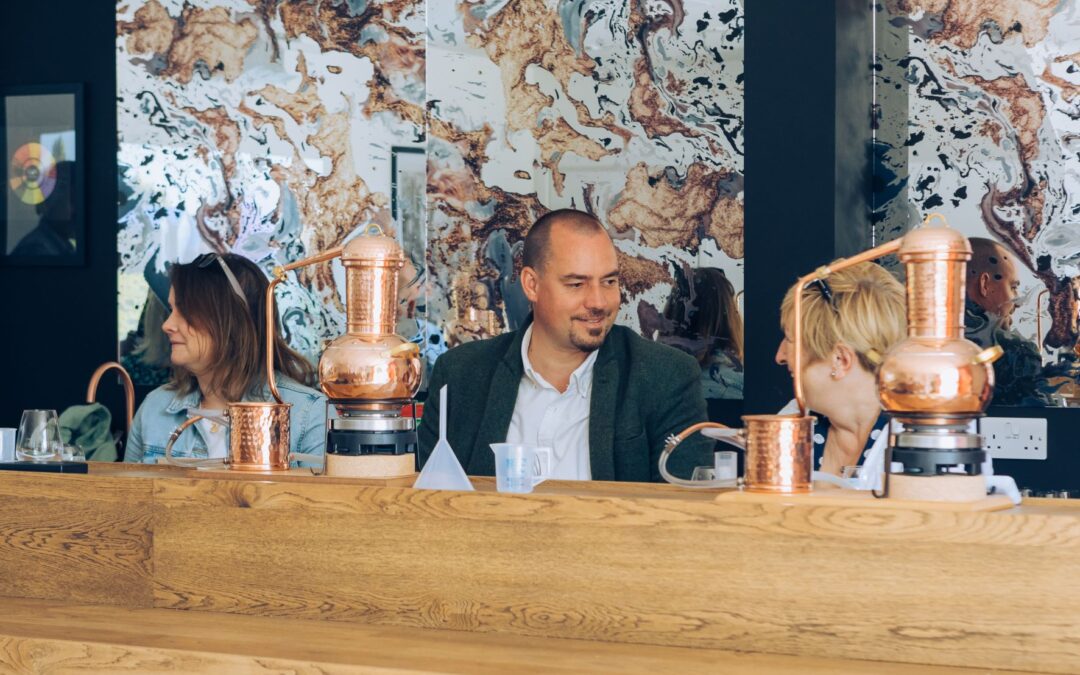We started our gin making experience started at the beginning of last year and it’s proving a sure hit with the pupils. As classes go, this is one you wouldn’t have wanted to bunk off school.
Our gin making experience is great fun whether it’s a group booking, or want to make your own gin solo, our classes offer a unique experience for the area. With a G & T in hand people are led into the beautiful gin room with 10 polished copper stills, guide books and a tray of 24 botanicals to choose from.
Our Gin making professor talks students through the gin making process with a little guidance and advice on their concoction, sometimes dropping bigger hints for the mavericks that are tempted to go off-piste.
There’s a buzz of conversation between partners on which botanicals to add to the still, then it’s heads down to weigh them out carefully. Once everyone has tipped their choices into the stills, it’s time to whack on the heat.
As the stills start bubbling away, it’s time for another G & T while hearing anecdotes and the history of gin. The stills climb to 72 degrees. We can then begin the process of converting a liquid into vapour that is subsequently condensed back to liquid form. Just like when steam from a kettle becomes deposited as drops of water on a cold surface. Distillation is used to separate two or more liquids having different boiling points, in this case we are looking to separate alcohol from water.
All of a sudden, there’s excitement from the students as they see the first drops of distillate coming out of the tubes. This then increases to a steady stream trickling into the collection pots.
We call this ‘The Heads’ – we collect around 30ml into a smaller separate container as this liquid has a very high intensity of juniper and citrus oils which would dominate the palette and aromas. This would throw the recipe out of balance, so we put them to one side.
The class are then encouraged to keep tasting the drips until they notice a change in flavour. We then cut this to collect ‘The Hearts’ which makes up the best of the spirit.
Once we have extracted all the good flavours and most of the alcohol, the temperature starts to rise. At this point, we start to push other flavours (bitter, vegetal, grassy), which are not desirable, so it’s time to finish the run and discard the last part known as ‘The Tails’.
This leaves us with a gin that has a whopping 80% ABV (alcohol by volume). Now that would give you an almighty hangover! We need to dilute that with purified water down to an ABV of 40%. So, with a hydrometer in hand, the class start mixing to get the alcohol content down.
At this stage the students are looking very pleased with themselves and pour the finished product into two 50cl bottles.
Finally, to finish off the gin making experience it’s time to name the gin, the most common choice is after a pet or loved one …however some have been a little too ‘blue’ to mention!!!

